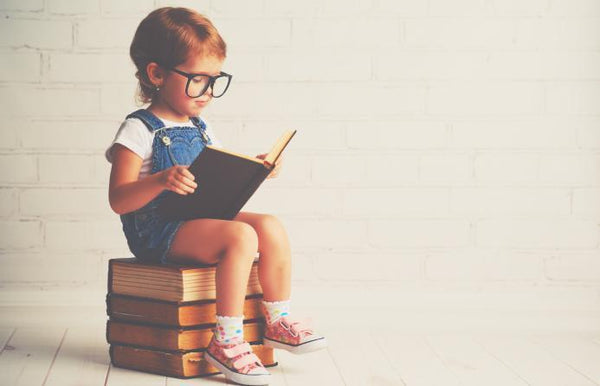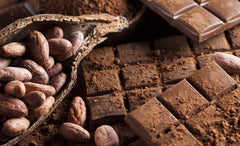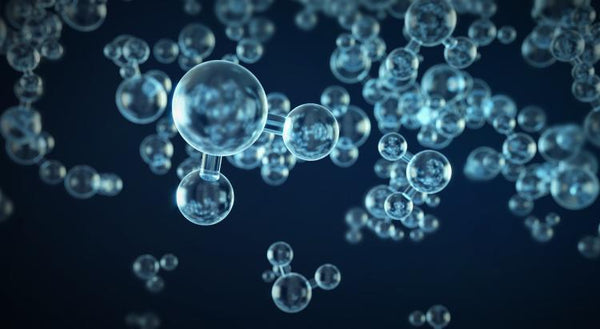10 Reasons We Switched From Glass to BPA-Free Plastic Bottles
![]() Jul 02, 2019
Jul 02, 2019

Safety is our #1 Concern
From the moment Kaliana heard her very first formula to help that toddler screaming from anxiety, our number one concern has been helping families.
Switching to BPA-free plastic from glass bottles was no easy task. Historically, essential oil products always have had to be packaged in glass or metal to prevent the essential oils from corroding the container.
So for the first decade, all Kaliana products were bottled in glass. However, because safety is our number one concern, we realized it was essential to switch to an alternative so that families could use them anytime, anywhere.
Kaliana’s husband, Dan, had over 20 years experience in bottling with glass and plastic. He knew how to help her find what they needed—it had to mimic glass, while also being BPA-free and food grade.
It took us 5 years of focused effort, as Kaliana worked daily to create her unique 150 step blending process that makes it possible for us to package our Fix-Me™ Mists, Beverage Boosters, and Deep Release™ Oils in portable, durable and safe plastic. Her process not only sustains product integrity, it also increases our Formulas’ effectiveness.
BPA-Free & Food Grade Quality
Our sturdy white bottles are made of a very specific plastic called polyethylene terephthalate or “PET.” PET is a strong and lightweight plastic that is widely used for packaging foods and beverages. The FDA and other health-safety agencies have approved it safe for foods and beverages.
PET plastic containers are also labeled with the #1 recycle code. They are a popular choice for water, peanut butter, cooking oil, mouthwash, and shampoo. Special grades of PET can even be warmed in the microwave.
People often think that plastic is cheaper. However, our plastic droppers for our Beverage Boosters cost us more than glass droppers. The tips can break on glass droppers, so we decided to pay more and go with plastic ones for the safety of our consumers.
PET was first synthesized in the U.S. during the mid-1940s, but wasn’t patented until 1973. It quickly gained market acceptance. Today, PET is one of the world's most commonly used, versatile, and trusted materials.
10 Reasons We Switched From Glass to Plastic:
1. Safer for children, bathrooms, kitchens & travel
School aged children often take our products to school, playdates, swimming pools, and camp to help handle social environments, so we needed our products to be travel friendly.
In addition, women and men use our products daily in kitchens and bathrooms which tend to be tile.
Glass bottles can be a safety hazard when they fall to the ground and shatter into sharp pieces. PET plastic in 1oz & 4oz bottles are safer for travel and backpacks.
2. White PET blocks both air & light
Gases and UV radiation can limit the shelf life and reduce the quality of foods, skin care and oils. Oxygen penetrating a container can lead to color changes, flavor degradation, and nutrient loss. UV light also contributes to changes in color, taste, quality and aroma.
PET bottles serve as excellent oxygen and UV light barriers. The white bottles we use are manufactured to minimize air and light penetration in order to protect and preserve our product.
3. BPA-Free
BPA or bisphenol A is a chemical added to many commercial products such as sealants, dental devices, eyeglass lenses, and household electronic items. Higher doses can be toxic and have been linked to infertility and other health problems.
Plastics labeled with the #7 recycle code means it may contain BPA. PET plastics are #1 in recycling and BPA-free, making it a safer option.
4. Remarkable product performance—mimics glass
PET plastic bottles enhance content protection without compromising recyclability. Just like glass, PET allows low permeability of water, carbon dioxide, and oxygen. These characteristics maintain the integrity of each product.
5. Less carbon footprint: less gas & freight
PET plastics reduce carbon footprint because they offer an outstanding eco profile. Their production requires less energy and creates fewer greenhouse gas emissions. Because they are so lightweight, they offer up to 90% weight reduction compared to glass.
This leads to a faster and more economical transportation, i.e. reduced fuel emissions. PET-production also produces less solid waste compared to other packaging materials.
6. More streamlined = less shelf space
PET is more streamlined and smaller than an equal glass container. Glass has to be thicker due to its rigidness; therefore the same size bottle in glass takes up more space than in plastic—i.e. a 1 oz glass bottle is bigger than a 1 oz plastic bottle.
This means glass is less energy efficient by requiring more shelf space in stores and your home. Think of space savings and tiny houses.
7. Less breakage & damaged goods
Because PET-containers are virtually unbreakable, they are considered extremely safe. If there ever is an issue, PET splits rather than shatters. This provides optimal protection to consumers as well as those in shipping, production, packaging, and storage.
8. Exceptional quality & #1 recycling
PET is completely recyclable. In fact, it is the most recycled plastic worldwide. In the U.S., over 1.5 billion pounds of used PET containers are recovered for recycling each year.
The recycling process of PET involves washing and re-melting, and chemically breaking it down to its component materials to make a new resin. The current U.S. recycling rate for PET is 31%.
9. Less packing material required
Because glass bottles are very fragile, they require more care when it comes to packaging and shipping. Packing peanuts, bubble wrap, cushioning, or some form of padding are required in packing glass containers so they won’t break when the box is shaken or dropped.
In addition, glass is not only heavier, it also requires larger boxes for shipping because glass bottles are larger, plus they cannot be squeezed together due to breakage like plastic can.
PET bottles use:
- less trees for cardboard boxes
- less inner packing material
- less room on the truck for transport
10. Due to our unique 150 Step blending method, we can package in PET
Kaliana worked diligently for over 5 years with her Formulations to create her special 150 step blending process that enables our Fix-Me™ Mists and Deep-Release™ Oils to disperse essential oils in a way that is stable in PET, and also maintains their high vibrations. No one had ever before come up with process to package essential oil blends in this way.
About the Author: Kaliana has been studying natural healing since 1976. She developed her own line of aromatherapy products in 1995, is a gifted intuitive, Master Energy Healer, author of 4 books, professional speaker, and offers private consulting for spiritual women and moms.
Kaliana is a certified Phyto-Aromatologist, graduated from Queens University as a Presidential Scholar, sat on the Board for Eating Disorders at The University of North Carolina, Chapel Hill, holds a 4-year Advanced Certification from the Mastery of the Heart School, and teaches certified courses for Continuing Education Hours by NCBTMB.
Disclaimer: This article is not intended to provide medical advice, diagnosis or treat. This information is based on research and knowledge by the author, and the ideas are not intended as substitute for medical advice. As with any products it is suggested that you check with your medical practitioner prior to use. The author disclaims any liability arising directly or indirectly from the use of any products mentioned herein.
















There are no comments for this post.
Leave a comment